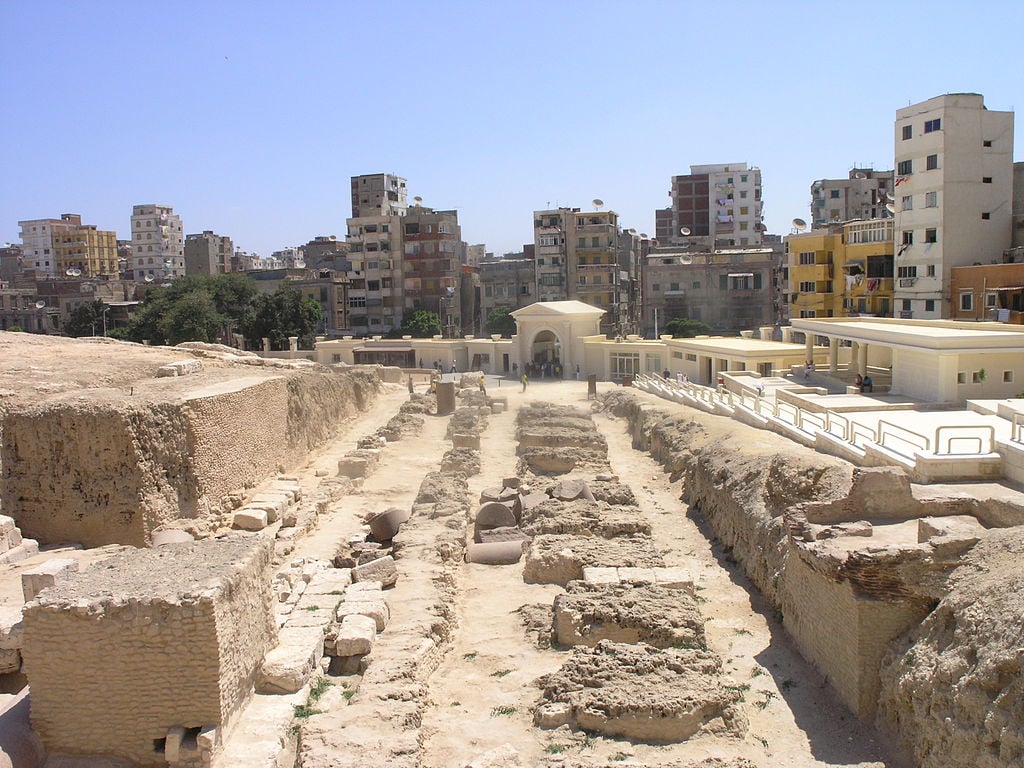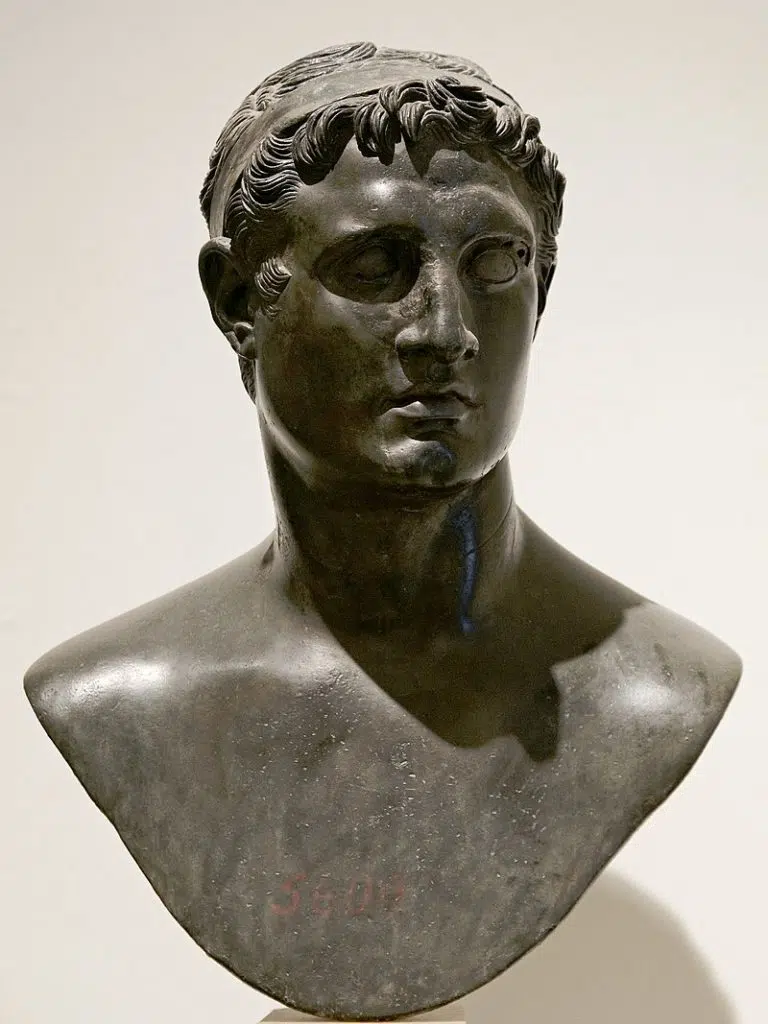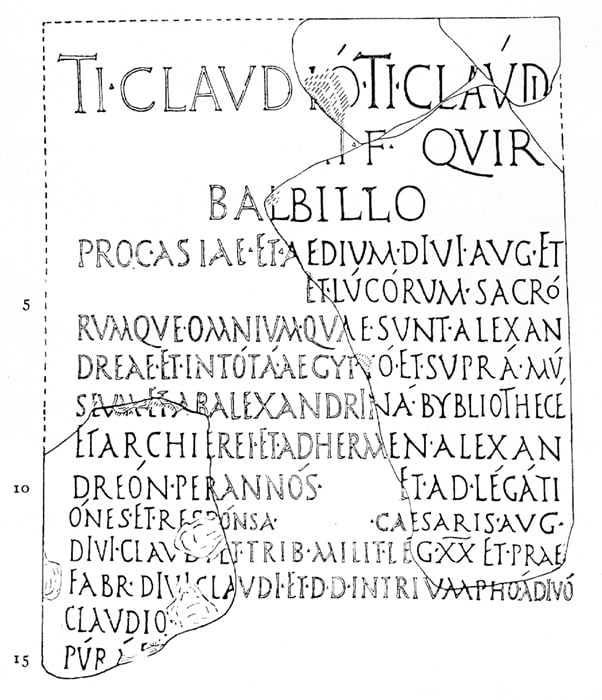Ancient Library of Alexandria One of Greatest Treasures of Mankind
July 14, 2024

The ancient Library of Alexandria, built in the city that was the brainchild of Alexander the Great, was one of the greatest wonders of the world, hosting scholars who explored science, history and all other areas of knowledge before its tragic destruction.
The Great Library of Alexandria in Alexandria, Egypt, was one of the largest and most significant libraries of the entire ancient world. It was part of a larger research institution called the Mouseion, which was dedicated to the Muses, who were the nine goddesses of the arts in Greek mythology.
In Greece, the Athenian ruler Peisistratos was said to have founded the first major public library in the sixth century BC. It was out of this mixed heritage of both Greek and Near Eastern book collections that the idea for the Library of Alexandria was born.
The idea of founding a library in Alexandria may have been proposed by Demetrius of Phalerum, an exiled Athenian statesman living in Alexandria, to the Pharaoh Ptolemy I Soter, but the Library itself was most likely not built until the reign of his son, Ptolemy II Philadelphus.


The Alexandrian Library, however, was unprecedented due to the scope and scale of the Ptolemies’ ambitions; their mission was to produce a repository of all knowledge known to mankind at the time.
The Library quickly acquired many papyrus scrolls, due largely to the Ptolemaic kings’ aggressive and well-funded policies for procuring texts. They dispatched royal agents with large amounts of money, ordering them to purchase and collect as many texts as they possibly could, about any subject and by any author.
In a famous story which has come down through the ages, it was decreed by Ptolemy II that any books found on ships that came into port were taken to the library, where they were copied by official scribes. It is unknown precisely how many such precious scrolls were housed at the Library at any given time, but estimates range from 40,000 to 400,000 at its height.

“The place for the cure of the soul”
In time, a medical school also was founded at the Library, in which scientific human dissections were first undertaken; this practice alone provided invaluable knowledge to the world of medicine.
Alexandria quickly came to be regarded as the capital of knowledge and learning, in great part because of its astonishing Library. Many important and influential scholars worked there during the third and second centuries BC.
However, the Library poses one of the greatest mysteries in the world, as Dr. Bob Brier, the chairman of the philosophy department at the University of Long Island, explains. “The amazing thing about the library in Alexandria is that it was the most important place of learning in the ancient world and we don’t know where it was or where it is now.
“We don’t know what it looked like. We don’t know the details of what books it had; we don’t know everybody who (worked) there. There’s more that we don’t know than what we do know. But it was the most important intellectual event perhaps in the history of mankind,” he stated in an interview with NBC News’ Roger Mudd.

During the reign of Ptolemy III Euergetes, the original library’s collections had grown so large that a daughter library was established in the nearby Serapeum, a temple to the Greco-Egyptian god Serapis. The remains of that structure — the only concrete link we have to the Great Library — are still there in the city today.The Library was built in the Brucheion, or Royal Quarter, of Alexandria. Its exact layout is not known, but ancient sources describe it as comprising a collection of scrolls known as bibliothekai (βιβλιοθῆκαι), with the building featuring Greek columns, a peripatos walk, a room for shared dining, a reading room, meeting rooms, gardens, and lecture halls.
In short, it created a model for the concept of a university campus.
According to popular description, an inscription above the Library’s papyrus scroll shelves read: “The place of the cure of the soul.”
International scholars mingled freely, exchanging ideas
In addition to collecting works from the distant past, the Mouseion which housed the Library also served as home to a host of international scholars, poets, philosophers, and researchers, who, according to the first-century BC Greek geographer Strabo, were provided with a large salary, free food and lodging, and exemption from taxes.
The Library itself was directed by a scholar who served as head librarian, as well as tutor to the king’s son.The first recorded head librarian was Zenodotus of Ephesus, who lived from c. 325 to c. 270 BC. He is known to have written a glossary of rare and unusual words, which was organized in alphabetical order, making him the first person in the world known to have employed alphabetical order as a method of organization.
Meanwhile, the scholar and poet Callimachus compiled the Pinakes, a 120-book catalogue of various authors and all their known works. This library catalogue has not survived, but enough references to it and fragments of it have survived to allow scholars to reconstruct its basic structure.
According to legend, the Syracusan inventor Archimedes invented “Archimedes’ screw,” a pump for transporting water, while studying at the Library.
Jason and the Argonauts saga contains geographical knowledge derived from Library’s works
Pharaoh Ptolemy II Philadelphus then appointed Apollonius of Rhodes, who lived from c. 295 to c. 215 BC, a native of Alexandria and a student of Callimachus, as the second head librarian of the Library of Alexandria. He is best known as the author of the “Argonautica,” the epic poem about the voyages of Jason and the Argonauts, which has incredibly survived to the present in its complete form.The Argonautica displays Apollonius’ deep knowledge of history and literature and makes allusions to a vast array of events and texts, thanks to the riches available to him at the Library.
The third head librarian, Eratosthenes of Cyrene, who was born c. 280 and lived to c. 194 BC, is best known today for his scientific works, including his seminal discovery of the circumference of the earth. However, the polymath was also a literary scholar. Eratosthenes also produced a map of the entire known world, which incorporated information taken from sources held in the Library, including accounts of Alexander the Great’s campaigns in India.
Ptolemy III had expensive copies of the plays written by Aeschylus, Sophocles, and Euripides made on the highest quality papyrus and sent back the copies to the Athenians — keeping the original manuscripts for the library.
As the Library expanded, it ran out of space, so it opened a satellite collection in the Serapeum, which was a temple dedicated to the Greco-Egyptian god Serapis, located near the royal palace.
The librarianship of Aristophanes of Byzantium saw the invention of the system of Greek diacritics, who also wrote important works on lexicography, and introduced a series of signs for textual criticism. He himself wrote introductions to many plays, some of which have survived in partially rewritten forms.

However, it was also during the early second century BC that the political power of Ptolemaic Egypt began to decline. Consequently, many Greek scholars began to leave Alexandria for safer countries with more generous patronages. The Library of Alexandria was never to recover from this decline, although it had some noted successes thereafter in the brilliant contributions of its librarians.
Aristarchus of Samothrace, who lived from c. 216 to c. 145 BC, was the sixth head librarian. Earning a reputation as the greatest of all ancient scholars, he produced not only texts of classic poems and works of prose, but full hypomnemata, or long, free-standing commentaries, on them.
In 145 BC, however, Aristarchus became caught up in a dynastic struggle, resulting in Ptolemy VIII expelling all foreign scholars from Alexandria, forcing them to disperse across the Eastern Mediterranean world — enriching those areas and allowing scholarship to flourish there.
Aristarchus’ student Dionysius Thrax, who lived from c. 170 to c. 90 BC, even established a school on the Greek island of Rhodes. Thrax wrote the first book on Greek grammar, a work which remained the primary grammar textbook for Greek schoolboys until as late as the twelfth century AD.
Political struggles, the rise of a new empire contributed to the decline of Alexandria
The Romans based their own grammatical writings on it, and its basic format incredibly remains the basis for grammar guides in many languages even today.
Confronted with growing social unrest and other major political and economic problems, the later Ptolemies did not devote as much attention towards the Library and the Mouseion as their predecessors had, leading to its further decline
A shift in Greek scholarship as a whole took place around the beginning of the first century BC because by this time, all the major classical poetic texts had finally been standardized and extensive commentaries had already been produced on the writings of all the major literary authors of the Greek Classical Era.
Meanwhile, Alexandrian scholarship was probably introduced to Rome in the first century BC by Tyrannion of Amisus, a student of Dionysius Thrax, who lived from c. 100 to c. 25 BC, again — as so often seen throughout Greek history — enriching the cultural life of the rest of the world with its export.
Was the Library really burned?
The Roman general Julius Caesar was forced to set fire to his own ships during the Siege of Alexandria in 48 BC; many ancient writers report that the fire spread and destroyed at least part of the Library of Alexandria’s collections; however, it may well have either at least partially survived or been quickly rebuilt at that time.
The first-century AD Roman playwright and Stoic philosopher Seneca the Younger quotes Livy’s “Ab Urbe Condita Libri,” which was written between 63 and 14 BC, as saying that the fire started by Caesar destroyed 40,000 scrolls from the Library of Alexandria.
However, the Roman historian Cassius Dio, who lived from c. 155 to c. 235 AD, recorded that “Many places were set on fire, with the result that, along with other buildings, the dockyards and storehouses of grain and books, said to be great in number and of the finest, were burned.”Scholars have interpreted Dio’s wording to mean that the fire did not actually destroy the entire Library itself, but rather only a warehouse located near the docks being used by the Library to house scrolls. Whatever devastation Caesar’s fire must have caused in the city, the Library was evidently not completely destroyed at that time.
The geographer Strabo,who lived from c. 63 BC to c. 24 AD, mentions visiting the Mouseion, the larger research institution to which the Library was attached, in around the year 20 BC, indicating that it either survived the fire or was rebuilt soon afterward.
Still, the manner in which he speaks about the Mouseion shows that it was nowhere near as prestigious as it had been a few centuries prior.
A Latin inscription, seen above, regarding Tiberius Claudius Balbilus of Rome, who died around AD 79, mentions the “ALEXANDRINA BYBLIOTHECE” on line eight.
Library’s status diminished
The emperor Claudius, who ruled from 41–54 AD, is recorded to have built an addition onto the Library, but after Alexandria came under Roman rule, the city’s status gradually diminished.
The Library likewise tragically dwindled in importance during the Roman period, due to a lack of funding and support. Its membership appears to have ceased by the 260s AD. Between 270 and 275 AD, the city of Alexandria saw a Palmyrene invasion and an imperial counterattack that most likely destroyed whatever remained of the Library, if it still existed at that time.
Meanwhile, as the reputation of Alexandrian scholarship declined, the reputations of other libraries across the Mediterranean world improved, and other libraries also sprang up within the city of Alexandria itself; some — or even all — of the scrolls from the Great Library may have been used to stock some of these smaller libraries.
The Caesareum and the Claudianum in Alexandria are both known to have had major libraries by the end of the first century AD.
Mention of both the Great Library of Alexandria and the Mouseion that housed it disappear after the middle of the third century AD, however. The last known references to scholars being members of the Mouseion date to the 260s.
In 272 AD, the emperor Aurelian’s forces destroyed the Broucheion quarter of the city in which the main library was located. If the Mouseion and Library still existed at this time, they were almost certainly destroyed during the attack as well. If they had somehow survived that attack, then whatever was left of them would have been destroyed during the emperor Diocletian’s siege of Alexandria in 297.
Serapeum served as a daughter library to the Great Library
The Serapeum is often called the “daughter library” of Alexandria. As late as the beginning of the fourth century AD historians believe it held the largest collection of books in the city of Alexandria.
In the 370s and 380s, the Serapeum was still a major pilgrimage site for pagans, however. It remained a fully functioning temple, and had classrooms for philosophers interested in theurgy, the study of cultic rituals and esoteric religious practices.
Under the Christian rule of Roman emperor Theodosius I pagan rituals were outlawed, and pagan temples were destroyed. In 391 AD, Theophilus, the bishop of Alexandria ordered the destruction of the Serapeum and its conversion into a church. The pagans of Alexandria were incensed by this act of desecration, especially the teachers of Neoplatonic philosophy and theurgy at the Serapeum.
Its teachers took up arms and led their students and other followers in a guerrilla attack on the Christian population of Alexandria, killing many of them before being forced to retreat. In retaliation, the Christians of the city vandalized and demolished the Serapeum — although amazingly some parts of the colonnade were still standing as late as the twelfth century.
However, none of the accounts of the Serapeum’s destruction mention anything about it still having a library, and sources indicate that even that structure — the one surviving link to the library today — most likely did not have a significant collection of scrolls in it at the time of its destruction.
Not all knowledge was lost
As the course of history shows, power and knowledge ebb and flow from East to West, North to South, and libraries — perhaps even housing some of the precious scrolls that had been copied and housed at Alexandria — were popping up all over the Roman Empire.
By the fourth century AD, there were at least two dozen public libraries in the city of Rome alone.
In late antiquity, as the Roman Empire became Christianized, Christian libraries modeled directly on the Library of Alexandria and other great libraries of earlier pagan times began to be founded all across the Greek-speaking eastern part of the empire.
Among the largest and most prominent of these libraries were the Theological Library of Caesarea Maritima, the Library of Jerusalem, and a Christian library in Alexandria.
Incredibly, these libraries held both pagan and Christian writings side-by-side and Christian scholars applied to the Christian scriptures the same philological techniques that the scholars of the Library of Alexandria had used for analyzing the Greek classics, proving that the wisdom of the ancients survived alongside the new Christian worldview.
Nonetheless, the study of pagan authors remained secondary to the study of the Christian scriptures until the Renaissance, when writers and philosophers would rediscover them, in effect bringing these ancient Greek thinkers back to life again in modern times.
Ironically, the survival of ancient texts — surely including many of the precious scrolls housed at the Great Library of Alexandria — owes everything to the fact that they were exhaustingly copied and recopied, at first by professional scribes during the Roman period onto papyrus, and later by monks during the Middle Ages, onto parchment.
So in effect, the Library still lives on today, in the scholarship of researchers in every discipline, and in each and every library all around the world.



FACEBOOKTWITTERWHATSAPPEMAILCOPY URL
Filed Under
- Tags
- Alexandria
- Ancient Libraries
- Ancient library of Alexandria
- Egypt
- evergreen
- Great Library of Alexandria
- Library of Alexandria
- Ptolemies


